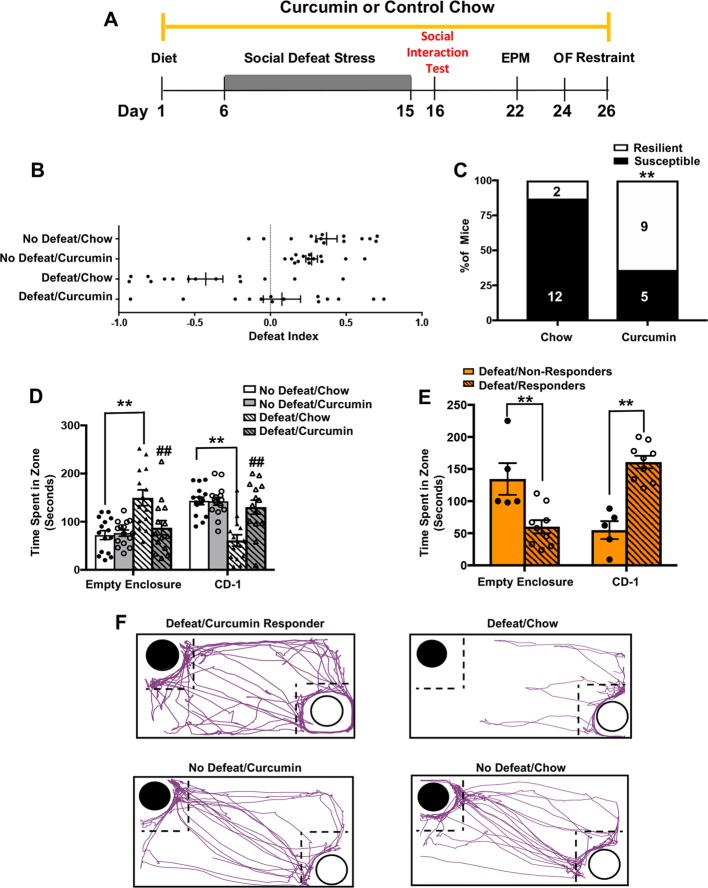Fig. 2.
Dietary curcumin promotes resilience to CSDS. a Schematic of behavioral procedures. b Distribution of DI scores for defeated and non-defeated 129/SvEv mice fed dietary curcumin or control chow. There were more defeated mice on curcumin than defeated mice on control chow that were categorized as resilient (DI > 0). c Percent of defeated mice on each chow (control chow or curcumin) that were categorized as resilient or susceptible. Number of animals is indicated inside the bar graph. d Time spent with the empty enclosure and the enclosure containing a novel CD-1. Defeated mice on control chow spent more time with the empty enclosure and less time with the CD-1 than defeated mice on curcumin (p < 0.0001 for each comparison) and non-defeated mice on control chow (p < 0.0001 for each comparison). e Time that defeated mice on curcumin spent with either the empty enclosure or the enclosure containing a novel CD-1. Mice that were curcumin responders (DI > 0; n = 9) spent significantly less time with the empty enclosure (p = 0.001) and more time with the CD-1 (p = 0.0001) than curcumin non-responders (DI < 0; n = 5). f The path (purple) of a representative mouse from each group during the social interaction test (black circle indicates CD-1; white circle indicates empty enclosure; dotted-line indicates interaction zone). Data represent mean ± SEM. No defeat/chow (n = 14), no defeat/curcumin (n = 14), defeat/chow (n = 14), defeat/curcumin (n = 14). **p < 0.0001; ##p < 0.0001 vs. defeat/chow. Defeat/responders (n = 5), defeat/non-responders (n = 5)

